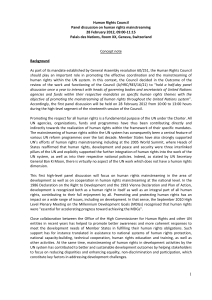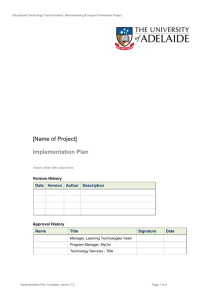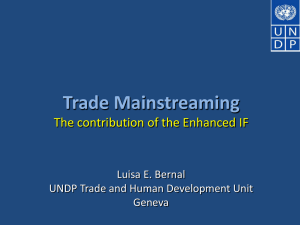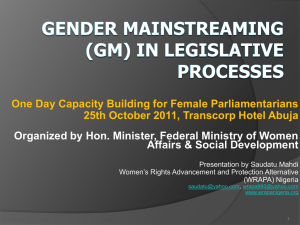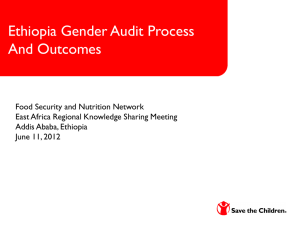CPTT-Mainstreaming-Training-CPTT-August-2
advertisement
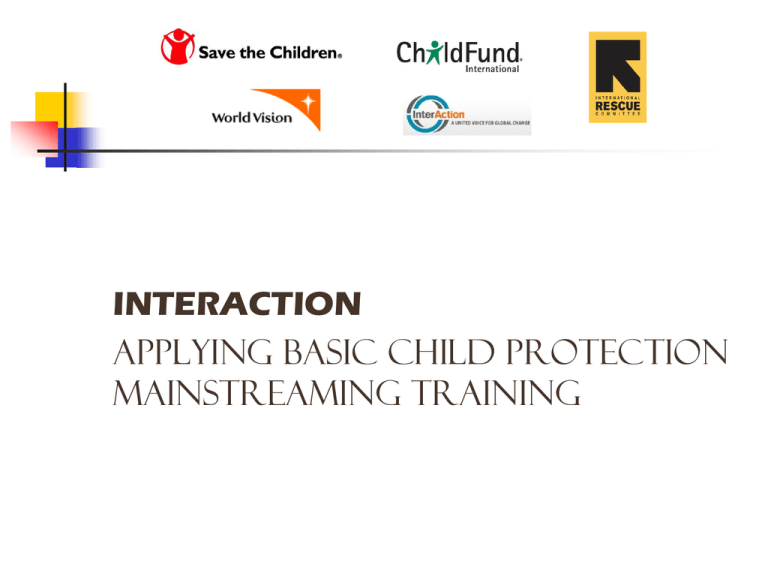
INTERACTION APPLYING BASIC Child Protection Mainstreaming TRAINING Introductions, Objectives and Expectations understand the uniqueness of children’s perspectives and be able to identify common risks and protection factors in children’s lives identify how your sector could better enhance the protection of girls and boys discuss and plan next steps that will allow you and your colleagues to implement child protection mainstreaming in your work Who is a child? What does it mean “to become an adult”? When did you become an adult and what did you have to do to become one? What can do an adult that a child cannot do? Power Walk What is child protection? “Child protection is the response to and prevention of abuse, neglect, exploitation and violence against children” Key concepts CRC Principles Child protection mainstreaming Rings of Responsibility child family community national international You as adults identify the risks in your community Looking at reality through children’s eyes Think back to when you were a child… What were some of the risks (the bad things, your fears…) you were exposed to as a child? What were some of the things that helped you from risks? Which were the circumstances? •Roads •Rivers •Open pits/ wells •Grassy areas with snakes •Mad dogs •Dangerous men •Bullying •Evil Spirits Gang violence Alcoholism Sexual violence Domestic violence Exploitative labor Early forced marriage Suicide Types of risks often identified by under 14 children Types of risks sometimes identified by 15-18 children Why is it important to engage children in data collection? It will improve the process and the outcomes of your project whatever sector you are working in. It improves the relevance and appropriateness of public and organizational decision-making It brings particular benefits to the poorest and most marginalized groups of children It acknowledges a shift in the view of children as ‘beneficiaries’ of adult interventions towards respect for them as ‘rights holders’ who are key ‘makers and shapers’ of their own destinies. Quality Child Participation What is child participation? How to do child participation? From listening to engaging Standards of participation exercise Participation requires special skills and contextualization. Listen to children and ask for help if you are around sensitive issues! Activity: stand up for your rights Water and sanitation project in Cote d’Ivoire asking girls about latrines… Income generating activities in Burundi, asking children about family budgets… Sector actions Are you enhancing protective elements to prevent CP violations? Are you addressing directly risks for children? How? Write down per sector one or more activities that you are going to implement differently to reduce risks/enhance protection in your sector. Child Protection Mainstreaming is necessary but not sufficient to fully protect children Highly technical activities requiring technical skills (i.e. Case management) Complex coordination among child protection actors (i.e. Separated children) Highly sensitive cultural issues (GBV, etc.) Meaningful participation (i.e. communicating with children) Relevant Resources 1. 2. 3. 4. 5. 6. 7. Menu of outcome indicators for Child Protection http://www.crin.org/docs/Menu_of_Outcome_Indicators__sept08_%5B1%5D.p df Save the Children practice standards for Child Participation http://www.savethechildren.org.uk/en/docs/practice_standards_participation.pdf Child Fund Child Friendly participatory research tools http://docs.google.com/fileview?id=0B4nhHdchFapHYmE5MjZkYzgtMGQzNS00Y 2Y5LTliZWQtZmIxZmUyM2Q2OTMx&hl=en&authkey=CK7_6vYN Checklist for CP Mainstreaming (to be published at http://www.humanitarianreform.org/Default.aspx?tabid=720 ) UNCRC Convention summary http://www.unicef.org/malaysia/UNICEF__Fact_Sheet_-_CRC_-_Summary_of_42_art.pdf and http://www.crin.org/docs/Lancet_CRC_implementation_innocenti.pdf CIDA Child Participation Guide http://www.acdi-cida.gc.ca/acdi-cida/acdicida.nsf/eng/ANN-619154247-R5A Others: ARC, CPiE CDs, etc. Evaluation Date and place (name optional) Do you think objectives were achieved? (1- understand children’s unique perspective and be able to identify common risks and protection factors in children’s lives; 2- identify how your sector could or is currently promoting the protection of girls and boys; 3-discuss and plan next steps that will allow you and your colleagues to implement child protection mainstreaming in your work) Why? Do you think your expectations for this training were satisfied? Was the training useful? In which way? What qualitative impact is it going to have this training into your program/sector of work? What it should be done different? What gaps you felt that should be addressed? What impact can have this training in the children of communities you are working with? Any other comment or suggestion?
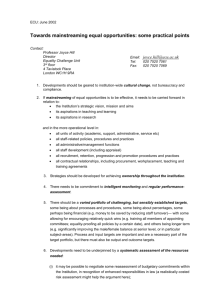
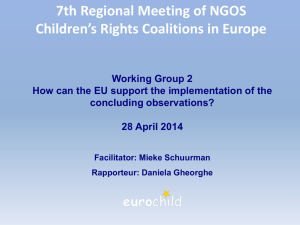
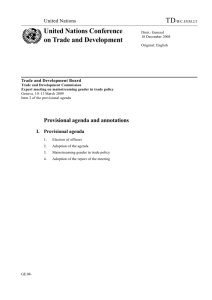
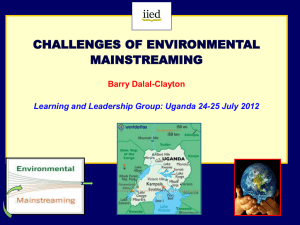
![Gender mainstreaming in higher education [PPTX 1.25MB]](http://s3.studylib.net/store/data/009261055_1-dfa19b70fcd91637c7a1dbd1bc939bd3-300x300.png)
